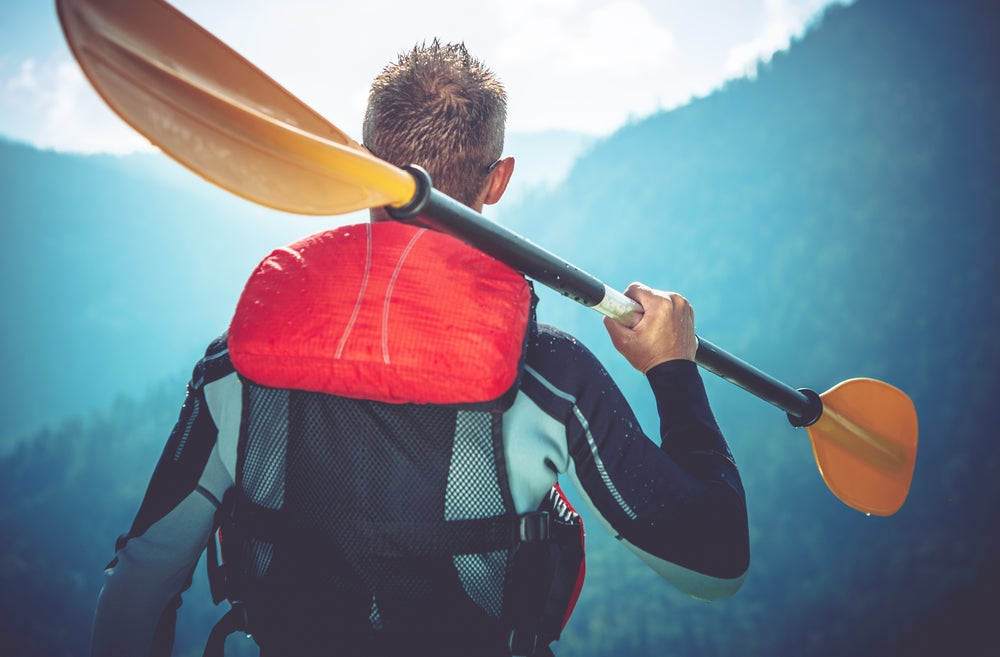As we get further into fall, it’s worth considering how your wardrobe should change when you’re on the water. It’s definitely something to prepare for as the temperatures drop. Not everyone knows the difference between wet suits and dry suits, and which one might be best when kayaking in the fall or winter months.
Many turn to the wetsuit or a dry suit as an easy insulating and waterproofing exterior layer. These two pieces are actually optimized for different purposes and have different advantages in a variety of kayaking settings. It’s not always clear which one you should use for what, though. Understanding the pros and cons of each will allow you to suit up for fall paddling sessions with ease!
Dry Suit vs Wet Suit Uses
A lot of people use the words wetsuit and drysuit interchangeably without realizing that they’re different pieces of outerwear meant for different purposes. You can use both for kayaking in different conditions, and both are great as the weather gets colder to protect you against the colder elements.
Pros of a Dry Suit for Kayaking
As the name implies, dry suits are intended to keep you dry throughout your kayaking trip. While staying dry helps you stay warmer, this suit is not directly intended to be particularly insulating on its own. Dry suits fit looser on your body to allow warmer, insulating mid layers to be worn under it. Water-wicking base layers and fleece, insulating mid-layers are recommended underneath a dry suit for maximum warmth.
Dry suits are most effective against splashes and unexpected dunks in the water while paddling. You don’t have to worry about dripping on yourself and getting soaked during kayaking strokes, and it’s a good layer to have to stay dry if you take a spill. You have the freedom to add as many layers under it as you need to stay warm, too. Plus, it’s easier to take on and off because of its looser fit to accommodate clothes underneath.
When to Use a Wetsuit for Kayaking
For sporting activities and more aerobic types of kayaking like whitewater rafting, a wetsuit can be a more useful outer layer. Wetsuits are neoprene, body-hugging suits that insulate you from head to toe without weighing you down. Their main objective is to keep you warm as opposed to keeping you dry.
Wetsuits won’t leave you soaking wet, though. Their insulating technology requires a small layer of water to be allowed in so it can be heated to your body temperature and used as an extra layer of warmth as you paddle. Since it fits so tightly, the warm water gets trapped, and it prevents more cold water from getting in. It’s similar to how you get warmer after sitting in a hot tub for a while!
Because of this method of insulation, wetsuits are most effective for types of kayaking in which you’ll naturally get wet and splashed throughout the trip. Whitewater and touring kayak expeditions are examples of these types of trips--you know going in that you’re going to get wet enough for the wetsuit to work in your favor. It’s not as baggy as a dry suit, so you’ll also be less weighed down and feel more like you’re wearing normal clothes with a wetsuit.
Now that you have a better understanding of when to use a wet suit vs a dry suit, you’re all set to get out on the water kayaking in the fall and winter! You don’t have to worry about the colder water and temps impeding your kayaking trip since you know how to outfit yourself appropriately. Happy paddling!

